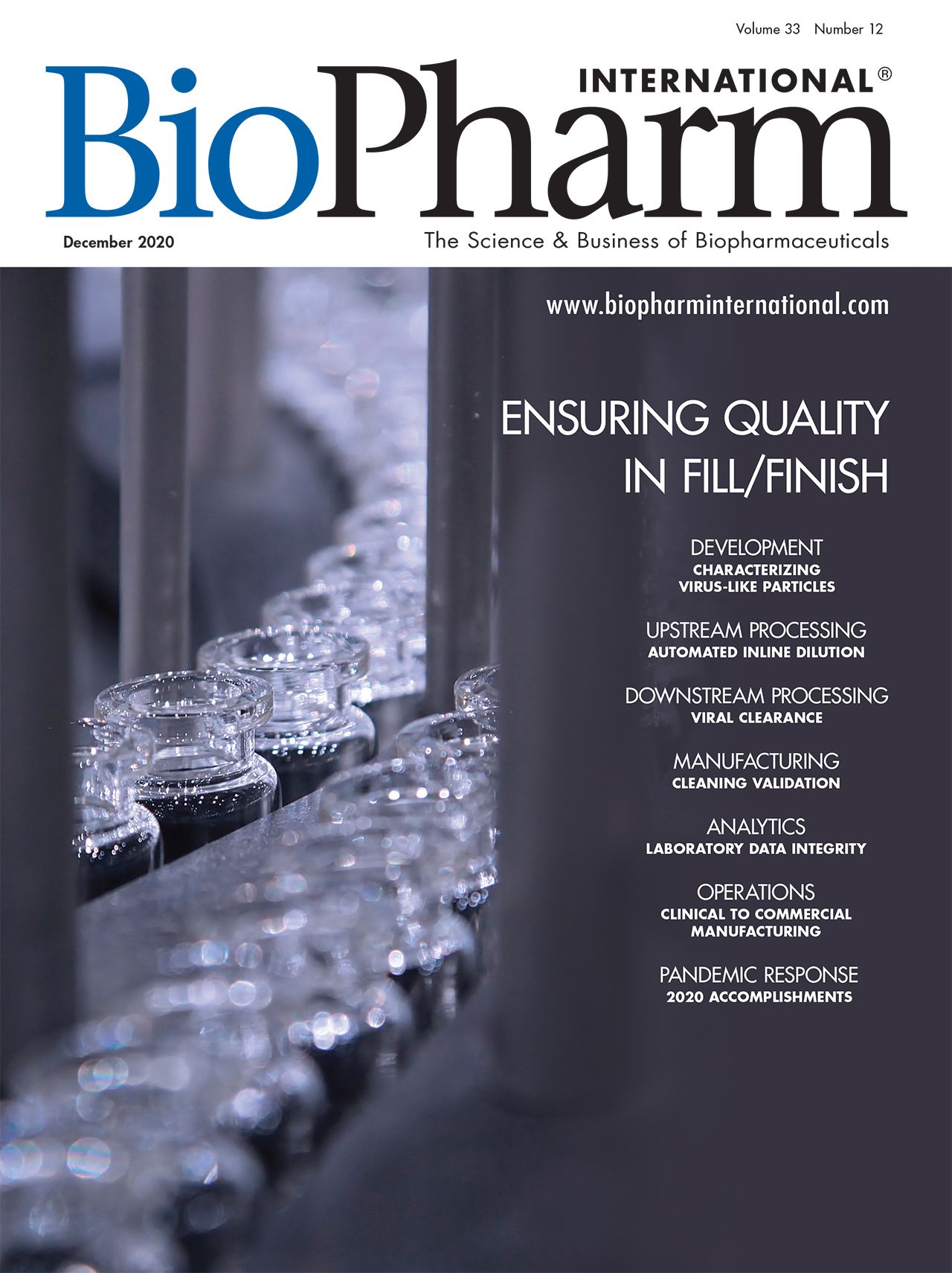Biopharma, People, Perseverance, and Hope
After a difficult year, biopharma science delivers promising results.
With one month left on the calendar, 2020 has delivered more than its share of major events to fill a decade or a generation. In any other year, a record-breaking hurricane and tropical storm season, devastating wildfires, a presidential impeachment trial, a presidential election, or widespread demonstrations to address racial inequality could have been the single event marking the year in history.
The year of 2020 will be remembered, however, for the COVID-19 pandemic and the global response—both the good and the bad—and lessons learned.
The bio/pharma year that was
Starting in January 2020, bio/pharma companies launched unprecedented R&D activity to develop treatments and vaccines. Big Pharma companies Pfizer, Johnson & Johnson, AstraZeneca, Sanofi, GlaxoSmithKline, and Merck fast-tracked vaccine development programs; however, the first clinical trial—for Moderna’s messenger RNA vaccine—was initiated in mid-March, with positive interim Phase I results announced in May.
In the treatment arena, scores of drug companies announced studies on potential new or repurposed therapies. FDA and the public learned lessons about how anecdotal reports and press releases may raise hope but are not replacements for scientific data, notably with the issuance and later revocation of an emergency use authorization (EUA) for hydroxychloroquine.
In April, Gilead reported that clinical studies showed the antiviral drug remdesivir was effective in helping some patients recover faster, leading to an EUA in early May, FDA approval in October, and a conditional recommendation against using the drug from the World Health Organization in November.
FDA also faced criticism from scientists when it issued an EUA for convalescent plasma in August during a White House press conference, despite a report from the National Institutes of Health that the data did not support such an EUA.
Through Operation Warp Speed, the Federal government invested in development, manufacturing, and distribution plans for multiple unproven vaccines at risk, in the hope that effective vaccines could get to patients faster. And throughout the year, scores of research, development, manufacturing, and supply agreements were announced, and nations scrambled to secure sufficient supplies to vaccinate their populations.
By the end of the summer, public confidence in the independence of FDA decision making was eroding, prompting executives from bio/pharma companies and career FDA officials to publicly commit to prioritizing science-based decisions and patient safety over political or business agendas in the review and approval of vaccines.
November may have been the turning point when promising antibody treatments from Eli Lilly and Regeneron received EUAs. And messenger RNA vaccine candidates from Pfizer/BioNTech and Moderna demonstrated 95% effectiveness, based on two months of clinical trial results. The news suggested that a scientific solution to the pandemic was in sight; EUA reviews were expected shortly.
Continuing the fight
Bio/pharma’s efforts to develop effective vaccines has traveled a long path in a short time. The good news about vaccines and treatments, however, is tempered by an exponential increase in infections and rising number of deaths. Much work is still ahead, including ramping up manufacturing, prioritizing who should get the vaccine, and overcoming the logistical challenges of a cold supply chain.
As the year closes, BioPharm International extends its appreciation to the bio/pharma near
You are the story of 2020.
About the Author
Rita Peters is editorial director of BioPharm International.
Article Details
BioPharm International
Volume 33, No. 12
December 2020
Page: 7
Citation
When referring to this article, please cite it as R. Peters, “Biopharma, People, Perseverance, and Hope," BioPharm International, 33 (12) 2020.

Tokyo University of Science Research Team Explores Improved Delivery of Antisense Oligonucleotides
April 18th 2025Using cholesterol-modified oligonucleotides, the research team aims to improve the delivery of antisense nucleotide-based therapies for treating neurodegenerative diseases and brain cancers.
Teva and Samsung Bioepis Launch Biosimilar Eculizumab in US Market
April 17th 2025Eculizumab-aagh (EPYSQLI) is now available in the US to treat patients living with difficult-to-treat rare diseases such as paroxysmal nocturnal hemoglobinuria, atypical hemolytic uremic syndrome, and generalized myasthenia gravis.